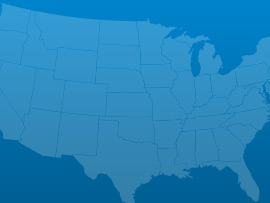Virginia has 20,997 bridges and culverts in our inventory, and the overall health of our bridges is in decline due to age and lack of funding. 56% of Virginia’s structures are approaching the end of their anticipated design life having been in service for more than 40 years. As part of this, 30% are over 50 years old. Virginia’s structures must be inspected regularly, with an average of 10,700 inspections annually so their condition can be evaluated. In 2013, Virginia’s inventory included 23.2% that were either structurally deficient or functionally obsolete. Of the major Virginia structures on the National Bridge Inventory, about 1 in every 4 bridges are structural deficient (meaning that they require maintenance, rehabilitation, or replacement) or functionally obsolete (meaning they no longer meet today’s design standards). These 4,871 structurally deficient or functionally obsolete structures are primarily a result of the gap between required and available funding. Available funds are often used to address immediate repair or replacement needs, leaving few remaining funds for preventative maintenance. Additionally, smaller structures have often been given funding which decreases the number of bridges requiring attention, but leaves a backlog of deferred maintenance on larger, more expensive structures. The statistics indicate an impending peak of replacements which may be required within the next 10 years and perhaps sooner, if needs are not addressed at a higher rate.
 Bridges
Bridges Dams
Dams Drinking Water
Drinking Water Rail and Transit
Rail and Transit Roads
Roads Solid Waste
Solid Waste Wastewater
WastewaterA: Exceptional, B: Good, C: Mediocre, D: Poor, F: Failing, ?: Incomplete
Each category was evaluated on the basis of capacity, condition, funding, future need, operation and maintenance, public safety, resilience, and innovation
Aviation
48 public-use airports
Bridges
1,186 of the 13,765 bridges are structurally deficient
Bridges
$96.30 million in bridge funds came from the Federal Highway Bridge Fund in 2011
Dams
71% of the state regulated dams have an Emergency Action Plan
Dams
360 high hazard dams
Drinking Water
$6.7 billion in drinking water infrastructure needs over the next 20 years
Energy
3.72 gigawatt-hours of renewable energy every year, ranking it 26th
Hazardous Waste
31 sites on the National Priorities List
Inland Waterways
670 miles of inland waterways, ranking it 17th nationally
Levees
16 miles of levees
Ports
79.8 million short tons of cargo in 2012, ranking it 10th nationally
Public Parks
$532.8 million of unmet needs for its parks system
Rail
9 freight railroads covering 3,214 miles across the state, ranking 21st nationally by mileage
Roads
9,761 of the state’s 74,591 public roads are major roads, and 6% are in poor condition
Roads
$1.8 billion a year in costs to motorists from driving on roads in need of repair, which is $334 /yr per motorist
Schools
$8.5 billion in estimated school infrastructure funding needs
Transit
73 million annual unlinked passenger trips via transit systems including bus, transit, and commuter trains
Wastewater
$6.9 billion in wastewater infrastructure needs over the next 20 years

March 03, 2017
As the President’s repeated in his address to Congress his pledge to dramatically increase infrastructure spending to the tune of $1 trillion, various Congressional Committees

March 01, 2017
On Tuesday night, President Trump addressed a joint-session of Congress for the first time in his presidency. Infrastructure was among the many issues he discussed.

February 28, 2017
U.S. motorists set a new record for vehicle miles travelled (VMT) in 2016, driving over 3.2 trillion miles, an increase of 70 billion miles from

February 17, 2017
Romantic dates, the Grammy awards and celebrating black history are not the only milestones of this week; the Oroville dam crisis in California and the